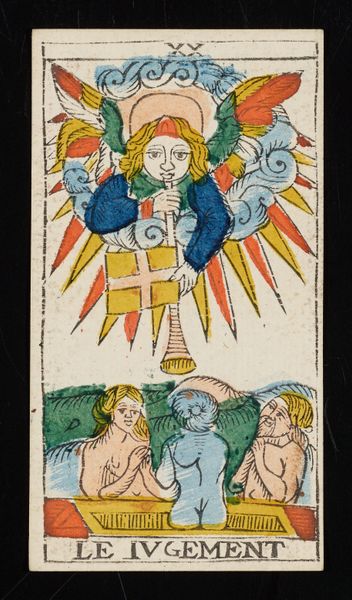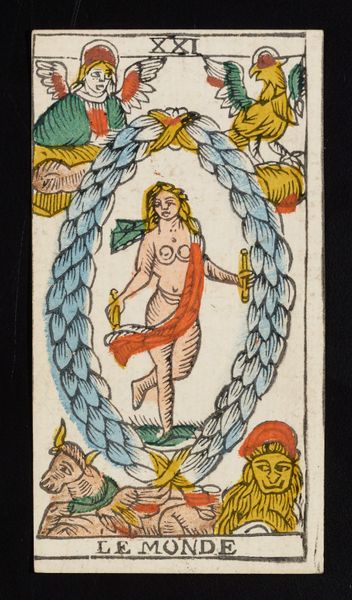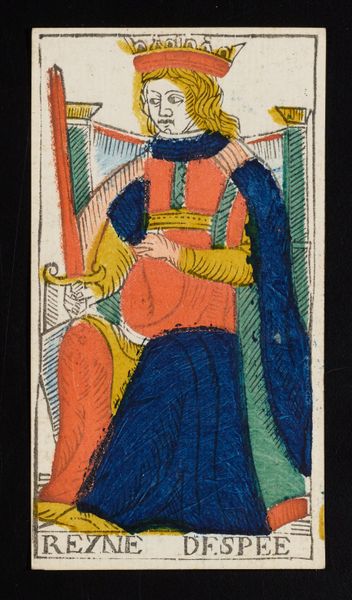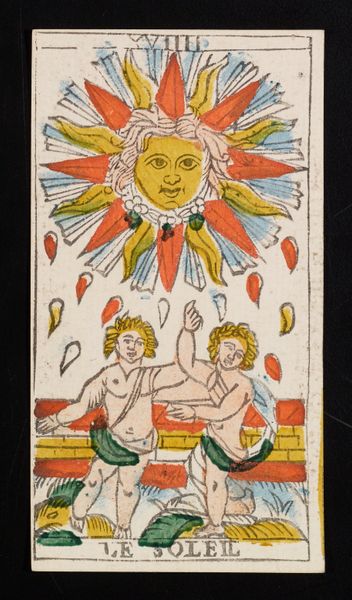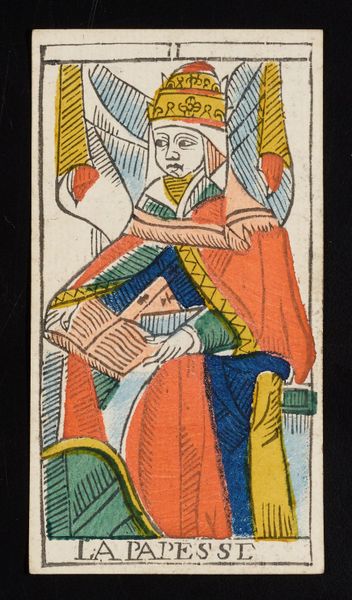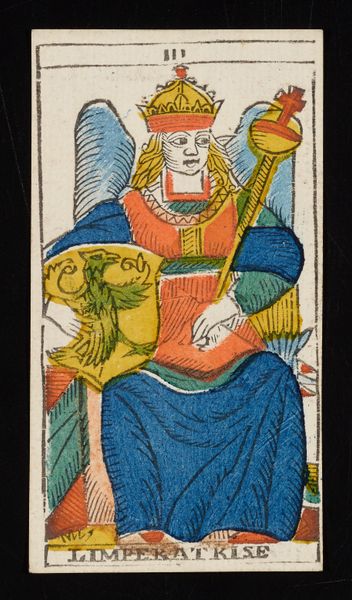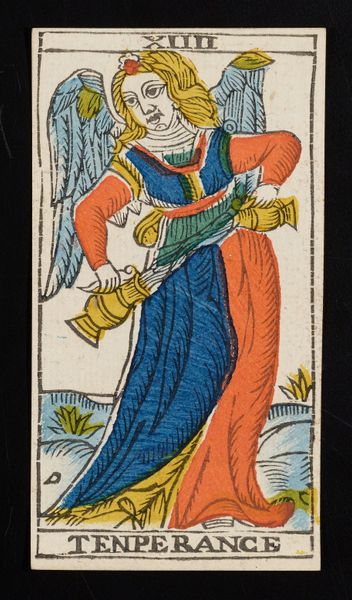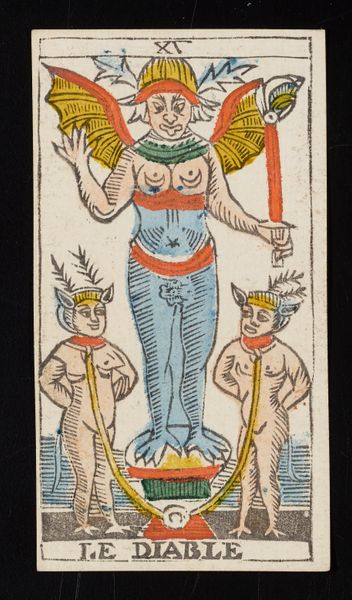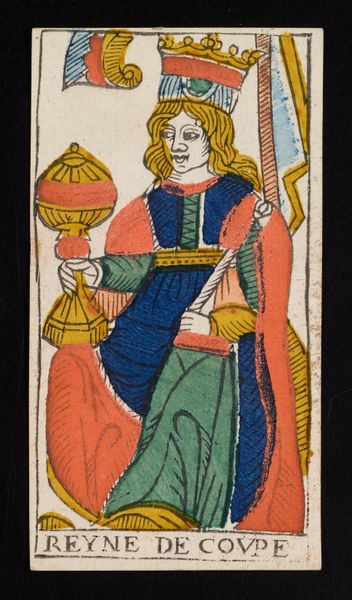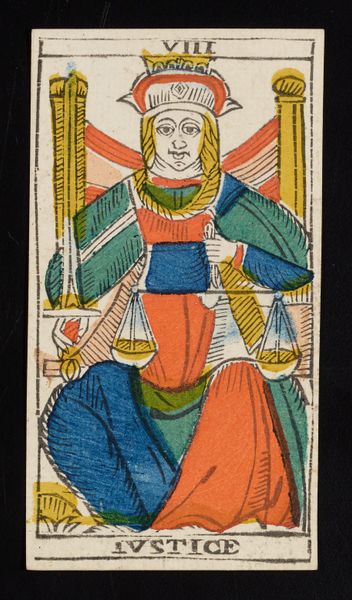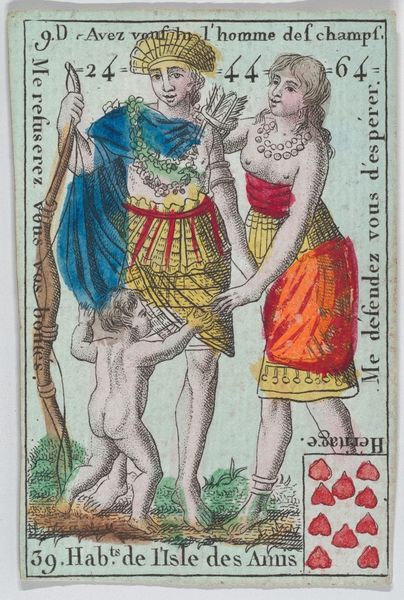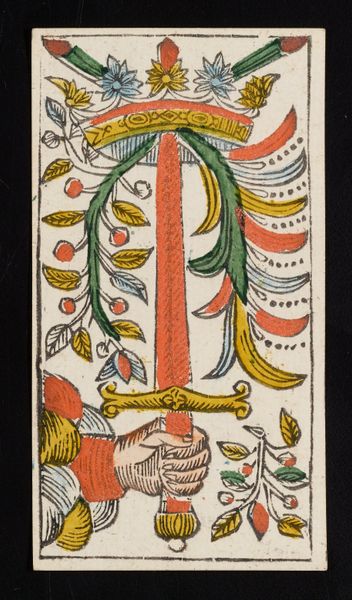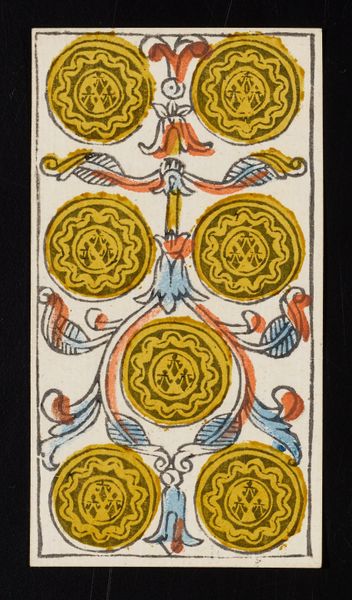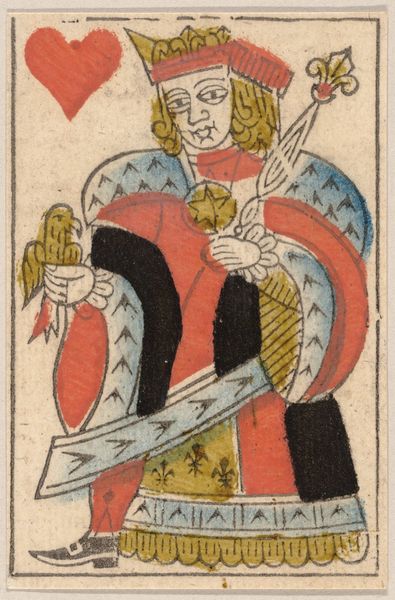
#
allegory
# print
#
figuration
#
geometric
#
genre-painting
#
erotic-art
Dimensions: 4 7/16 x 2 7/16 in. (11.27 x 6.19 cm) (image, sheet)4 5/8 x 2 1/2 in. (11.75 x 6.35 cm) (sheet, each)
Copyright: Public Domain
Editor: This is “The Lovers,” a print made by Claude Burdel in 1751. It's currently at the Minneapolis Institute of Art. It's visually quite striking with these distinct figures. It seems to depict a love triangle or some kind of choice in love. What can you tell me about its cultural significance, given it being a tarot card? Curator: The Lovers card is part of the tarot deck. Dating back to 15th-century Europe, it was used for gaming before evolving into a tool for divination and occult practices. This specific rendering raises several questions about the politics of imagery at that time. Editor: Like what kinds of questions? Curator: Consider its function: as a commercial product meant for popular consumption. Who was buying these cards, and what did this imagery of choice and relationships mean to them in the social context of the mid-18th century? What kind of narratives about relationships and societal expectations did these popular images reinforce or subvert? The figures depicted adhere to the conventions of the time in clothing and aesthetic rendering. Does that signify it promoted traditional views or simply operated within acceptable visual boundaries to ensure its spread and financial viability? Editor: So, it's less about the individual meaning of the card and more about what the image *did* in its historical context? Curator: Precisely. It becomes an artifact of cultural exchange. It’s not just an artwork, but a societal mirror. Understanding its production and dissemination reveals layers of historical meaning, regarding both individual choice and established social norms around "love." Editor: That's a totally different perspective than I usually take. I appreciate how you tie it to the social and economic landscape of the time. Curator: Examining art as a historical object allows for an engagement that moves beyond pure aesthetics into the realms of cultural influence. There is always more to know, beyond the face-value interpretations.
Comments
No comments
Be the first to comment and join the conversation on the ultimate creative platform.
